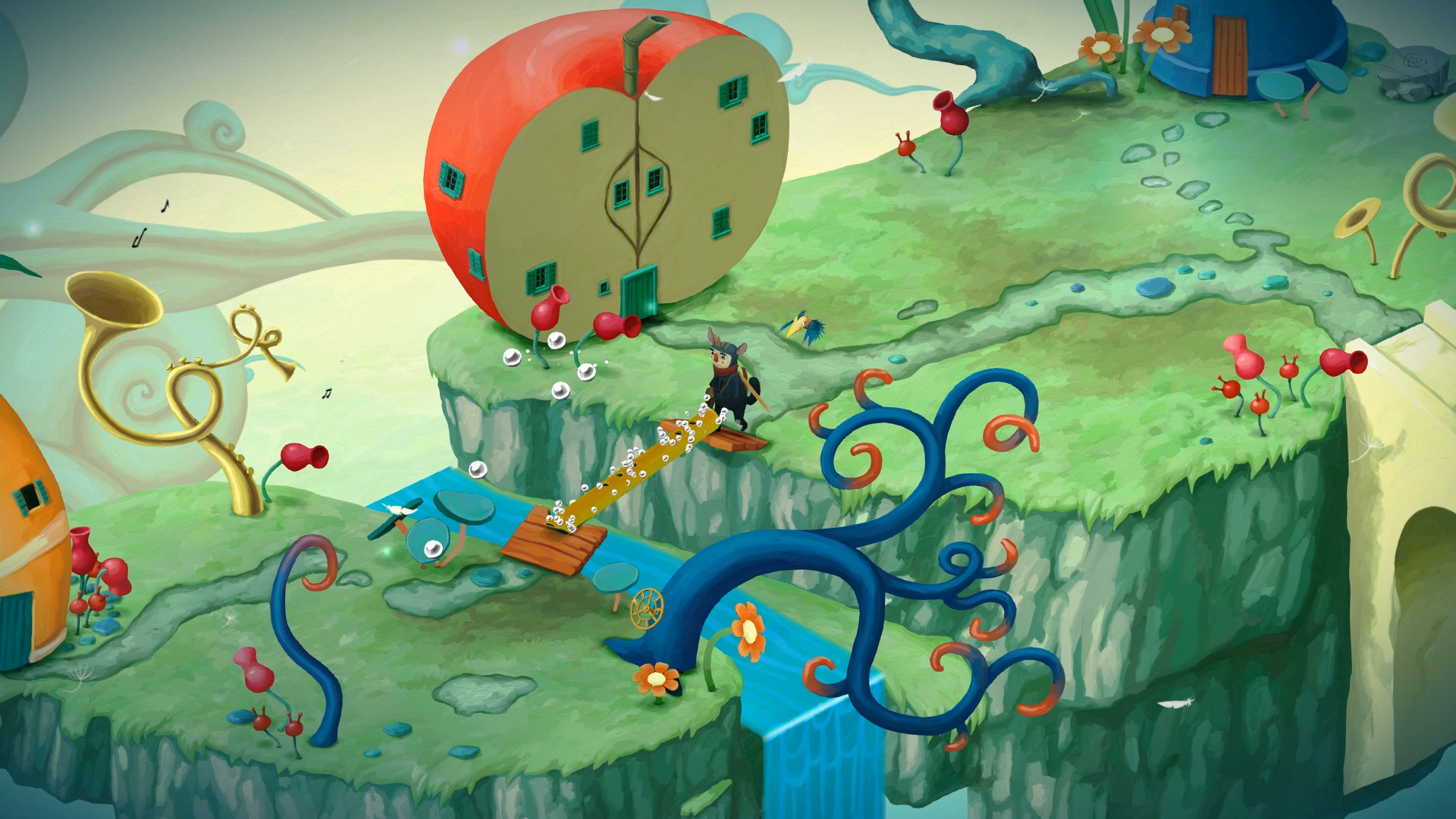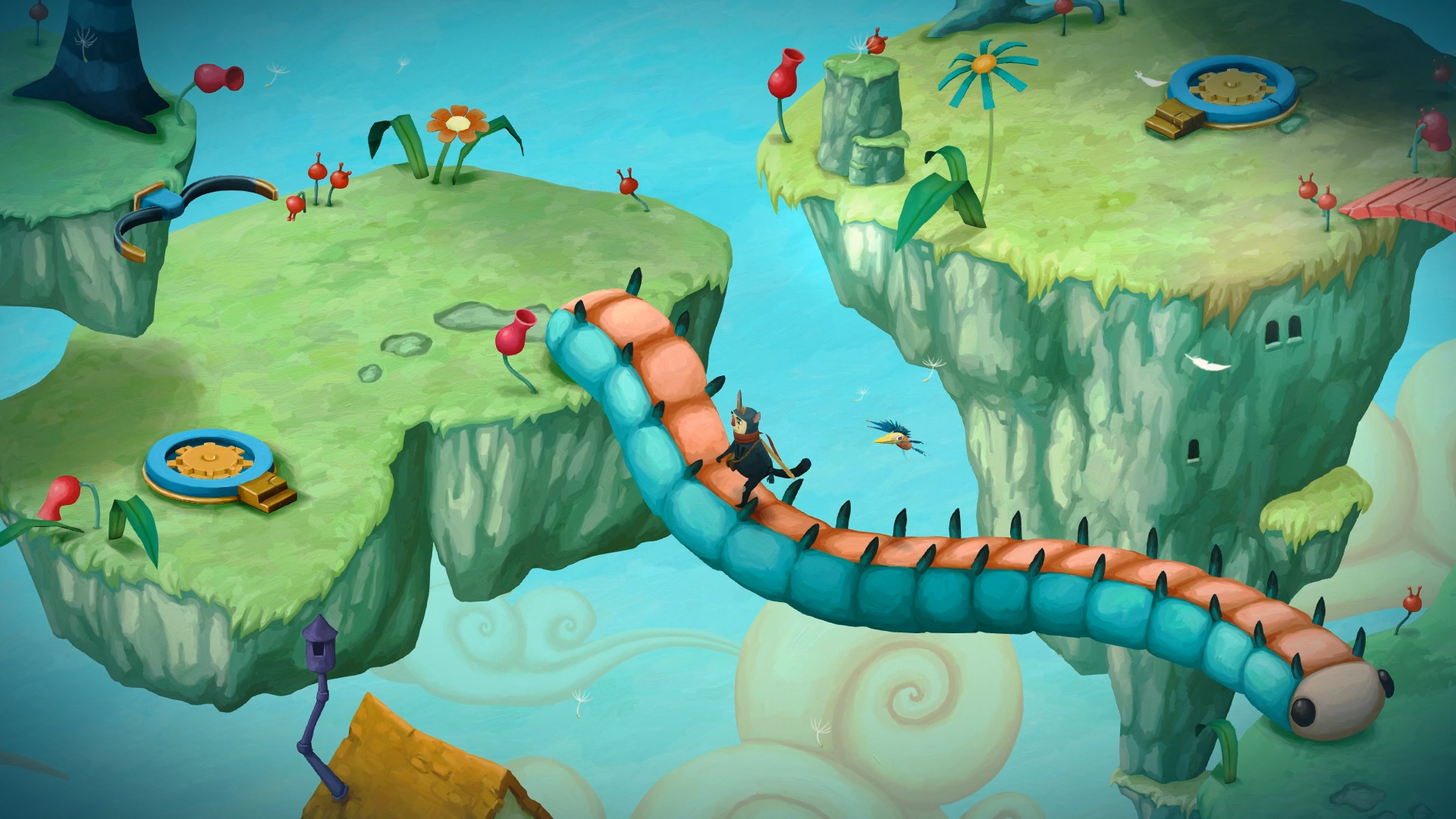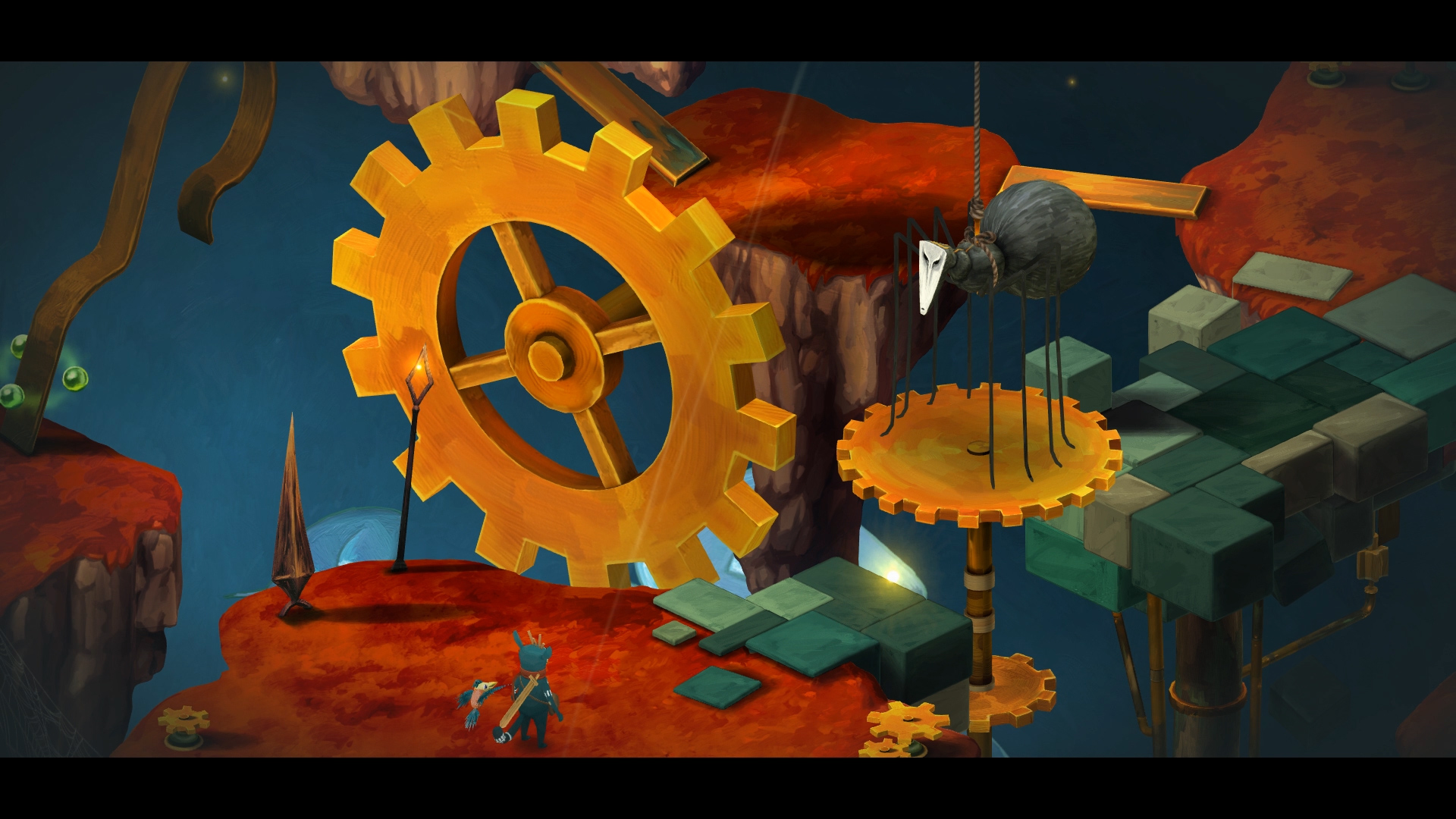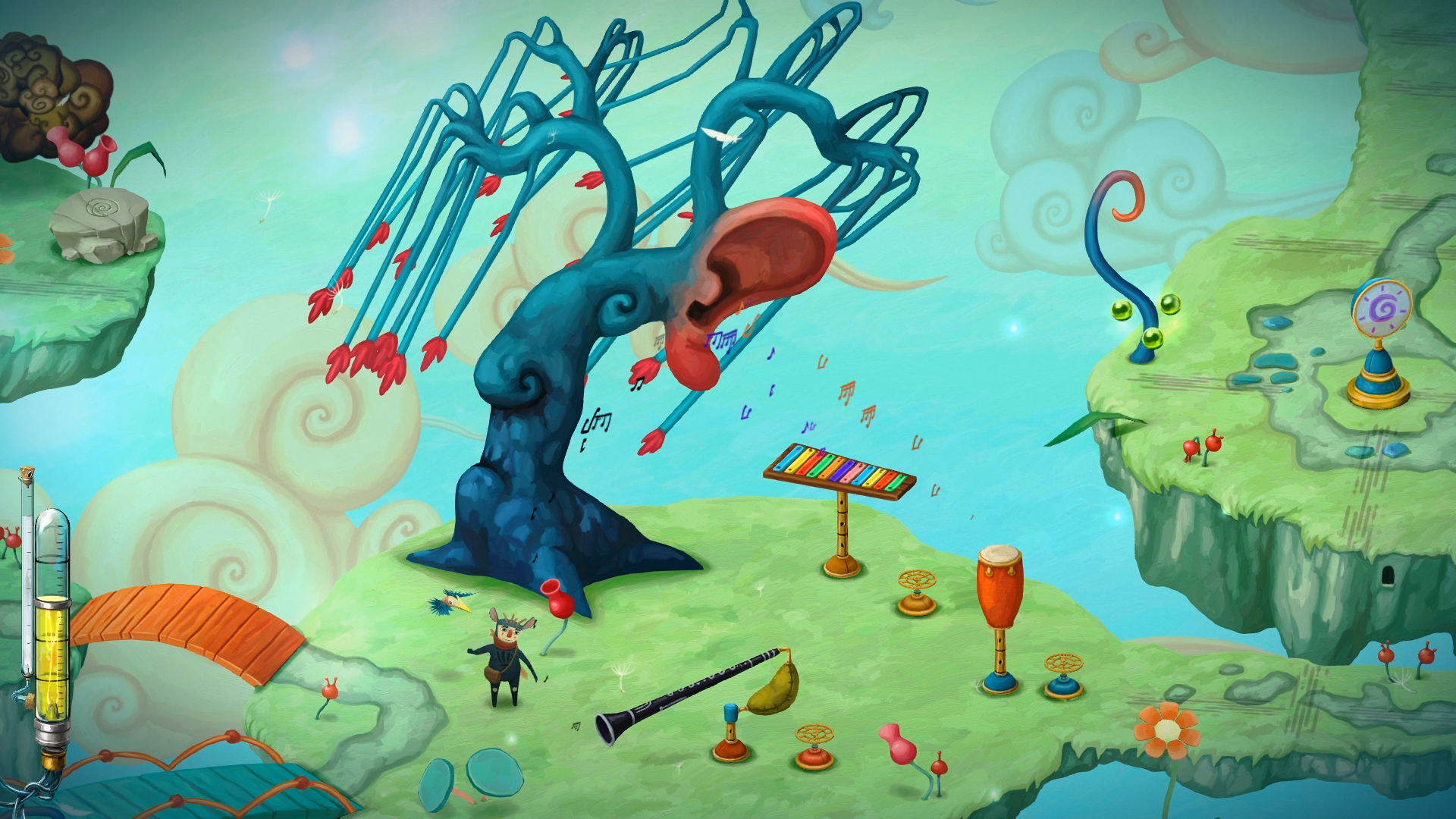If Dr. Seuss made a puzzle game, it would probably look like Figment
Ride snakes, plant instruments and get trees to dance in this environmental puzzler.

It's been a while since I've disagreed with a Steam description so strongly. Developer Bedtime Digital Games calls Figment "an action-adventure game," and I don't know why. There is some action, but it's tissue-thin. I'd much sooner describe Figment as an environmental puzzle game. It's primarily about exploring and interacting with its dreamlike, Dr. Seuss-esque world, which isn't a bad thing. Figment doesn't need action to carry its adventure.
That adventure stars Dusty, our reluctant hero, and his upbeat partner Piper. I say that, but there's also a bit of a meta-narrative going on. The true protagonist is arguably the child whose trauma-fractured mind Dusty and Piper are trying to repair. I won't spoil the exact nature of that trauma, but suffice to say we've got some inner demons to vanquish.
I wake up in Dusty's humble shack and chase the demon who stole my scrapbook (and, just as importantly, my martini) to the mind's central town. There, the town's rhyming mayor tells me I need to venture to the farthest reaches of the mind, from the 'symphonic lobe' to the 'overpass of originality' to 'clockwork town,' to take out the demons and steal their masks.

I've got places to be, but I stop to take a look around before I go. There's a wonderful sense of tactility and imagination to Figment's world. Floating bridges of bricks, lily pads and pencils dip and wobble as I walk over them. Streetlights are light bulb balloons which fly away when I cut them loose with my trusty wooden sword, and I'm pretty sure refrigerators are blooming on the trees. I plop a sapling into some fertile soil and out shoots a huge crimson leaf, which squishes under Dusty's pajamaed feet as I skip across it to the next area.
It's here, in the 'freedom isles', that Figment's psychological, papercraft setting really shines. Cartoonish sunflowers and vase-like tulips dot the mint-green landscape, intermingled with ukuleles and tubas sprouting from the ground. Everything's done up in bright colors and painted with wide, deliberate brush strokes, which gives the world a rough texture and vivid contrast. It's almost a shame to have it spoiled by the first demon I encounter, Plague, who throws fart jars and fills the screen with clouds of poisonous brown gas.

At this point, puzzles creep in on Figment's raw beauty. I've got to power and rotate some dragonfly-powered windmills to clear paths through the gas, and for that I need color-coated batteries. Combat is infrequent and incredibly simple, but puzzles are more diverse. There's an emphasis on collecting items, creating walkways and reusing items in new ways. Put this battery here to open this door, grab the handle within, then take that battery and handle somewhere else. Each area has its own evolving, discoverable toolkit on top of a unique theme, so even familiar mechanics stay fresh.
I love that each puzzle is a short story. (Skip this paragraph if you don't want any puzzles spoiled.) I come across an accordion bridge in the forgotten isles, and to fully extend it and progress, I have to collect three tuba pins to to plug up its holes and keep it from leaking air. I mean, obviously. The first pin is just lying around, but I really have to work for the second one. I'm inches away when a giant bird with a spade-like face swoops down and snatches it up. To get it back, I clear a field of poison-spitting flowers and tune instruments to get (what I can only describe as) an ear tree to dance, knocking a maraca from its limbs. Then I tape the maraca to the tail of a snake coiled around the bird's nest, and pull the snake's tongue to get it to shake its newly rattled tail. This sends the bird fleeing—right into the gust of the windmill I have pointed at its nest. Battered by my carefully placed wind, the bird finally drops the pin, bringing me one step closer to a complete accordion bridge.
Keep up to date with the most important stories and the best deals, as picked by the PC Gamer team.

Figment is as bizarre as it is colorful, and it's further characterized by a dynamic score. Remember those ukuleles and tubas I mentioned? The ones growing like plants all over the place? Whenever I walk by them or the many other instruments lining levels, the music changes in kind with a sudden swell of strings or brass or drums. I can also smack instruments to spice it up further. These small changes elevate the altogether folky music to the point that it becomes a key player in the setting. Which is great, because while Figment's puzzles are engaging enough, its atmosphere is what really captures my imagination.

Austin freelanced for PC Gamer, Eurogamer, IGN, Sports Illustrated, and more while finishing his journalism degree, and has been a full-time writer at PC Gamer's sister publication GamesRadar+ since 2019. They've yet to realize that his position as a staff writer is just a cover-up for his career-spanning Destiny column, and he's kept the ruse going with a focus on news, the occasional feature, and as much Genshin Impact as he can get away with.

